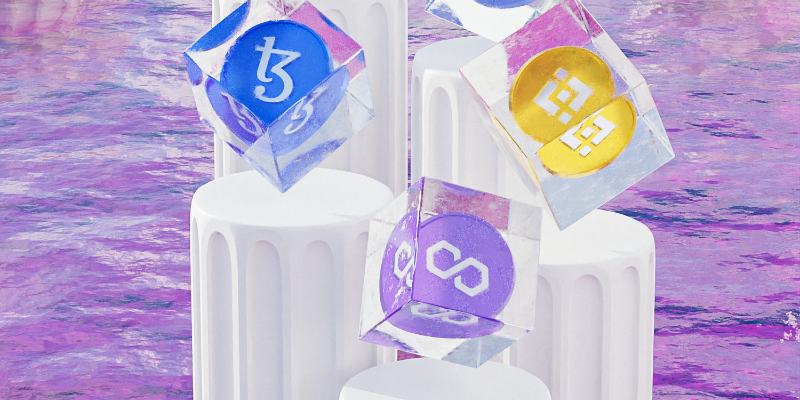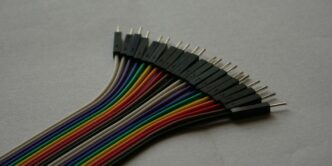Welcome to the fascinating world of NFTs (Non-Fungible Tokens), where digital collectibles, artwork, and blockchain-based assets are reshaping the market. In this comprehensive guide, we will delve into what NFTs are, how they function, and the potential risks and benefits of investing in them. Get ready for an immersive journey into the captivating world of NFTs!
Introduction
In this comprehensive guide, we will unveil the fascinating world of NFTs, exploring their nature, functionality, and the potential risks and benefits associated with investing in them. Prepare to immerse yourself in this exciting industry and acquire the knowledge needed to make well-informed decisions. Whether you are a passionate collector, an aspiring artist, or a savvy investor, this guide will provide you with unique insights into the flourishing NFT landscape. Get ready to discover the boundless possibilities of NFTs and embark on an exhilarating journey into the future of digital ownership.
Understanding NFTs
NFTs, or Non-Fungible Tokens, are unique digital assets built on blockchain technology. Unlike cryptocurrencies like Bitcoin or Ethereum, which are interchangeable, each NFT possesses distinct qualities that make it one-of-a-kind.
Think of an NFT as the digital equivalent of a rare baseball card or autographed memorabilia. The value of an NFT, similar to physical collectibles, relies on its scarcity and demand among buyers.
NFTs can take various forms, including digital artwork, music files, videos, tweets, and even virtual real estate in online games. Artists and creators have embraced NFTs as they offer new opportunities to monetize their work while maintaining ownership.
When you acquire an NFT, you gain irrefutable proof of ownership for that specific asset. The transaction is recorded on the blockchain, establishing an indisputable claim of ownership. This immutability instills confidence in investors regarding the authenticity and uniqueness of their investments.
How NFTs Operate
NFTs operate by utilizing blockchain technology to verify and validate the uniqueness of digital assets. They serve as digital ownership certificates, providing evidence of your possession of particular content, such as artwork, music, or collectibles.
To create an NFT, a process called minting is used. Minting generates a unique and permanent record on the blockchain, documenting the asset’s ownership and authenticity.
Once an NFT is created for a specific asset, it can be bought and sold, similar to physical collectibles. However, the value of NFTs depends on individuals’ willingness to pay for them, considering their rarity or sentimental value.
The transparency and immutability of the blockchain make NFTs alluring. Every transaction involving an NFT is recorded on a public ledger, allowing anyone to trace its history. Thus, owning an NFT goes beyond having something cool—it means supporting artists and exploring novel ways of engaging with our digital world.
The Advantages of NFT Investments
Investing in NFTs offers numerous benefits to collectors and investors. First and foremost, owning an NFT means possessing an exclusive digital asset that cannot be replicated or duplicated—a compelling opportunity for those valuing scarcity.
NFTs also provide a level of transparency absent in traditional investments. Blockchain records all transactions, facilitating ownership tracking and authenticity verification. This reduces the risk of fraud and instills confidence in investors.
Furthermore, NFT investments allow individuals to directly support artists and creators by purchasing their work, bypassing intermediaries such as galleries or auction houses. This grants artists more control over their artwork, while collectors obtain a slice of cultural history.
Additionally, NFTs have become highly liquid assets with considerable resale value due to their increasing popularity. As demand for NFTs rises, so does their worth.
While investing in NFTs provides ownership rights over unique digital assets, enhanced transparency, and liquidity, it is important to recognize the risks involved.
The Risks of NFT Investments
Investing in NFTs carries excitement but is not without risks. The NFT market is relatively new and unregulated, lacking guarantees regarding authenticity or quality.
As with any investment, the risk of financial loss is inherent. NFT values fluctuate based on factors like market demand and supply, necessitating thorough research and analysis to mitigate potential risks.
Furthermore, due to their digital nature, NFTs are susceptible to hacking and theft, posing significant risks to both investors and creators. Once an NFT is lost or stolen, recovery becomes challenging.
Moreover, there is a possibility that hype surrounding specific NFT assets may diminish over time. Similar to other assets like cryptocurrencies, this could lead to reduced investor interest, decreased demand, and potentially render NFTs worthless investments.
Conducting meticulous research and exercising caution are crucial to navigate the potential losses associated with investing in NFTs.
Purchasing NFTs
Purchasing NFTs can be an exhilarating and potentially profitable experience. However, it is essential to approach the process with care and conduct research beforehand.
First, you need a digital wallet that supports the necessary cryptocurrency for purchasing your desired NFT. Popular options include MetaMask, Coinbase Wallet, or Trust Wallet.
Once your wallet is set up and funded, you can explore various NFT marketplaces such as OpenSea, SuperRare, or Rarible. These platforms offer a vast array of unique digital assets, ranging from art pieces to collectibles.
Before making a purchase, carefully review the item’s details, including ownership rights and authenticity. Familiarize yourself with the royalties associated with each piece in case of future resales.
When participating in auction-style sales for NFTs, establish your maximum bid in advance to avoid overspending. Be aware that prices for certain items may fluctuate significantly depending on demand and scarcity.
Purchasing NFTs requires thoughtful consideration, research on technical aspects like wallets, and understanding the factors driving their value. Take the time to evaluate their worth to avoid any regrettable spending in future transactions.
Conclusion
This comprehensive guide has unveiled the thriving universe of NFTs, an expanding domain within the digital landscape. From artwork to collectibles and blockchain-based assets, NFTs provide ample investment and creative opportunities.
While the potential benefits of investing in NFTs are compelling, such as potential financial gains and direct support for artists, it is essential to approach this innovative frontier with caution. NFT investments entail risks, including volatility and scams.
Ultimately, the decision to invest in NFTs rests with you. This guide aims to provide valuable insights and information to make informed choices. Remember, thorough research and careful consideration are crucial when navigating the exciting realm of NFTs.













